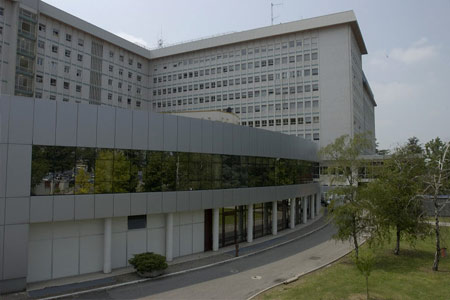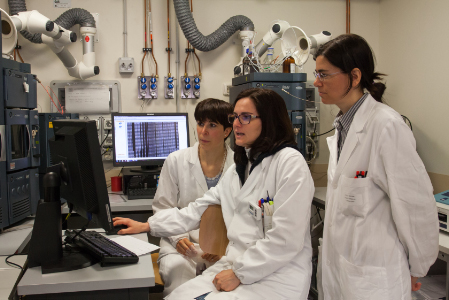- Authors:
-
Giustizieri, Ml; Albanesi, C; Fluhr, J; Gisondi, Paolo; Norgauer, J; Girolomoni, Giampiero
- Title:
-
H1 histamine receptor mediates inflammatory responses in human keratinocytes.
- Year:
-
2004
- Type of item:
-
Articolo in Rivista
- Tipologia ANVUR:
- Articolo su rivista
- Language:
-
Inglese
- Format:
-
A Stampa
- Referee:
-
Sì
- Name of journal:
- Journal of Allergy and Clinical Immunonology
- ISSN of journal:
- 0091-6749
- N° Volume:
-
114
- :
- Elsevier Science
- Page numbers:
-
1176-1182
- Keyword:
-
keratinocytes; histamine receptors; chemokines; GM-CSF; adhesion molecules
- Short description of contents:
- Background: Keratinocytes participate in initiation and. amplification of T-cell-mediated skin diseases. During these disorders, histamine can be released from both residents skin cells and immigrating leukocytes, and can affect the functions of dendritic cells, monocytes, and lymphocytes. Little information is available on the effects of histamine on keratinocytes. Objective: To examine the presence of functional H1 receptors on human keratinocytes and the capacity of histamine to modulate the expression of inflammatory molecules in these cells. Methods: Primary cultures of resting and cytokine-activated keratinocytes from healthy subjects were analyzed for histamine H1 receptor expression and the production of inflammatory mediators after exposure to histamine receptor agonists and antagonists. Results: Cultured keratinocytes constitutively expressed the H1 receptor mRNA and protein, which was not influenced by IFN-gamma, TNF-alpha, or IL-4. H1 but not H2 agonists induced calcium fluxes in keratinocytes. Treatment of keratinocytes with histamine (10(-7) to 10(-4) mol/L) or beta-histine increased the IFN-gamma-induced expression of membrane intercellular adhesion molecule 1 and MHC class I but not MHC class II molecules. Moreover, H1 stimulation promoted basal CC chemokine ligand (CCL)-5/RANTES and GM-CSF secretion and augmented IFN-gamma-induced release of the chemokines CCL2/monocyte chemoattractant protein 1, CCL5/RANTES, CCL20/macrophage inflammatory protein 3alpha, and CXC chemokine ligand 10/IFN-induced protein of 10 kd, as well as GM-CSF. Administration of the H1 antihistamine levocetirizine, but not of the H2 antihistamine cimetidine, abolished histamine-dependent expression of all of the investigated proinflammatory molecules in a dose-dependent manner (0.01-10 mumol/L). Levocetirizine at higher doses also reduced intercellular adhesion molecule 1, CCL5/RANTES, and GM-CSF release induced solely by IFN-gamma. Conclusion: Histamine exerts proinflammatory effects on keratinocytes via the H1 receptor, and these effects are efficiently inhibited by levocetrizine.
- Product ID:
-
22214
- Handle IRIS:
-
11562/304664
- Deposited On:
-
June 28, 2007
- Last Modified:
-
November 11, 2022
- Bibliographic citation:
-
Giustizieri, Ml; Albanesi, C; Fluhr, J; Gisondi, Paolo; Norgauer, J; Girolomoni, Giampiero,
H1 histamine receptor mediates inflammatory responses in human keratinocytes.
«Journal of Allergy and Clinical Immunonology»
, vol.
114
,
2004
,
pp. 1176-1182
Consulta la scheda completa presente nel
repository istituzionale della Ricerca di Ateneo 








